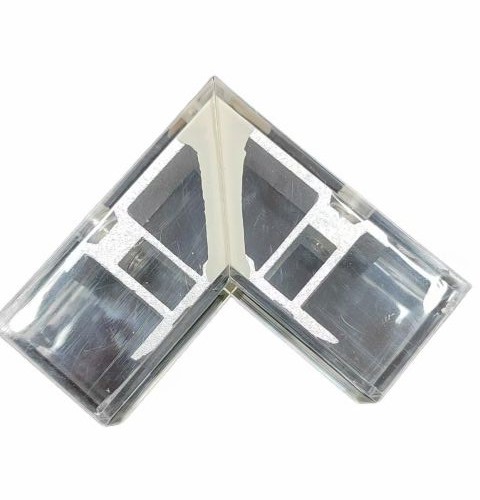

In the field of door and window manufacturing, the injection - molded corner joint, with its unique design and scientific working principle, has become a core component for enhancing the performance of doors and windows. Despite its small size, through precise structural design and material combination, the injection - molded corner joint achieves the dual functions of stable connection and efficient sealing. Next, we will deeply analyze its working principle and explore the mysteries behind this technology.
The injection - molded corner joint is mainly composed of the corner joint body and the injection holes. Its structural design is the foundation for realizing its functions. The corner joint body is usually made of high - strength aluminum alloy, which has good mechanical properties and corrosion resistance. Its right - angled shape precisely matches the cut of the door and window frame and sash profiles, and can be closely inserted into the profile cavity, providing a stable support structure for subsequent connection. The injection holes are a key design of the injection - molded corner joint. They are evenly distributed on the corner joint body to ensure that the corner - assembling adhesive can be smoothly injected into all the gaps between the corner joint and the profile. This structural design enables the injection - molded corner joint to be initially fixed to the profile through the corner joint body during door and window assembly, and to achieve a more secure connection through the injection holes.
From a mechanical perspective, the injection - molded corner joint addresses the weak points of traditional door and window connection methods. Traditional corner joints rely on screws to fasten the door and window frames and sashes. The connection between the screws and the profile is a point - force application. During long - term use, under external forces such as wind pressure and the impact of opening and closing the doors and windows, the screws are likely to loosen, causing the door and window frames and sashes to deform, affecting the safety and service life of use. However, the corner - assembling adhesive injected by the injection - molded corner joint forms a continuous bonding surface after curing, transforming the originally dispersed point - force application into a uniformly distributed surface - force application.
The working principle of the injection - molded corner joint in terms of sealing performance is equally ingenious. After the corner - assembling adhesive is injected into the gaps between the corner joint and the profile, it quickly fills all the tiny voids. During the curing process, the corner - assembling adhesive gradually hardens and forms an elastic sealing layer. This sealing layer has good flexibility and tightness, can closely adhere to the surface of the profile, and effectively prevent the penetration of air and moisture. In terms of waterproofing, whether the rainwater flows along the surface of the door and window or is impacted by rainwater carried by strong winds during a storm, the sealing layer formed by the injection - molded corner joint can block the rainwater from entering the interior of the door and window, preventing indoor leakage and protecting indoor decoration and furniture.
END